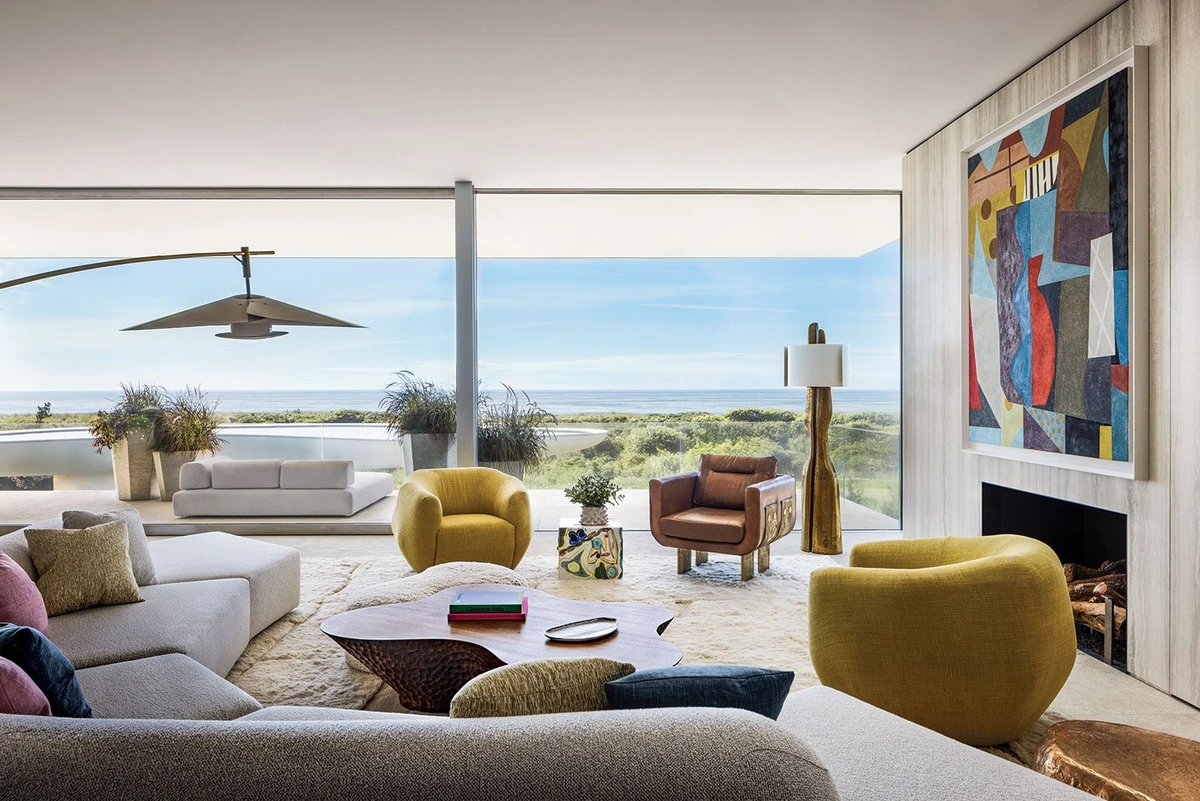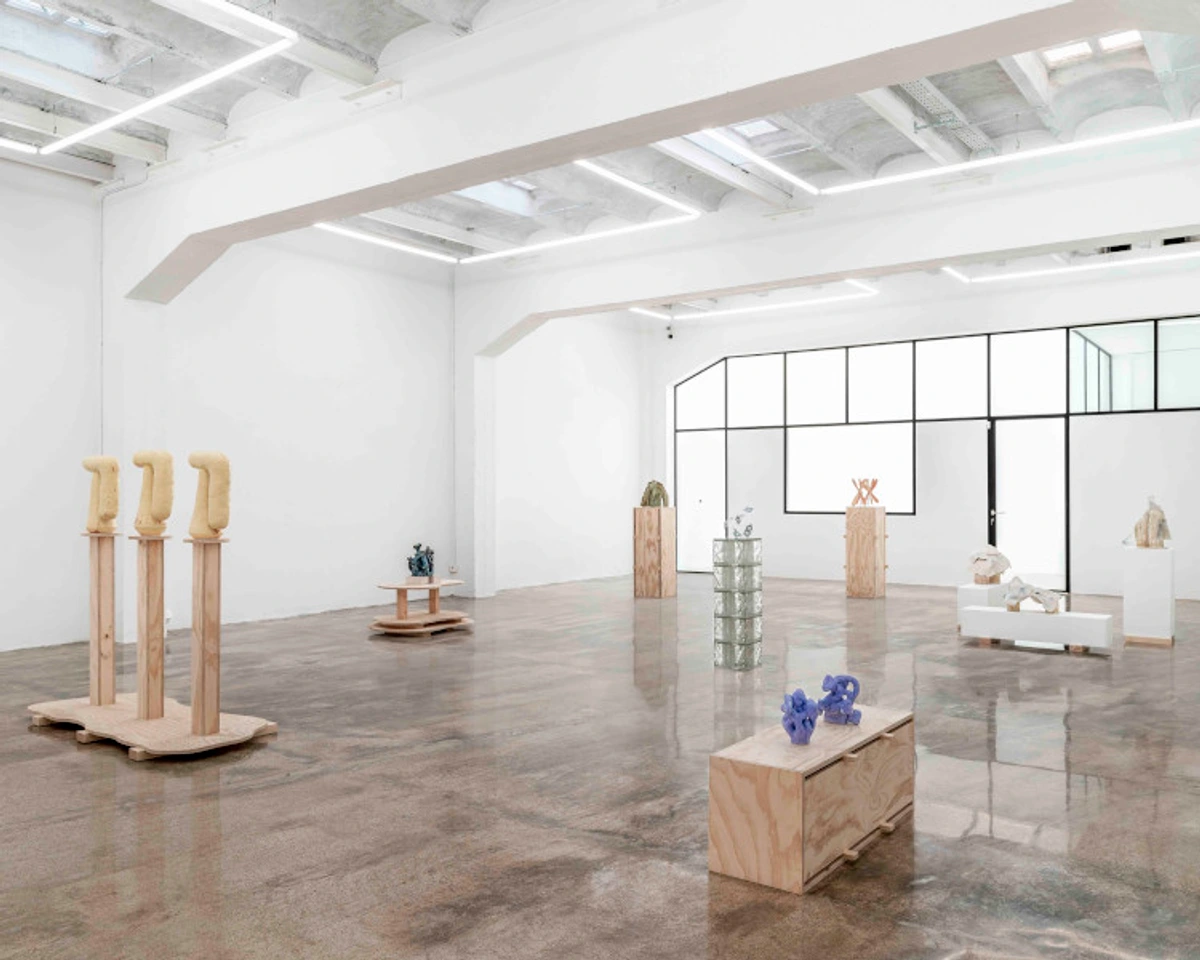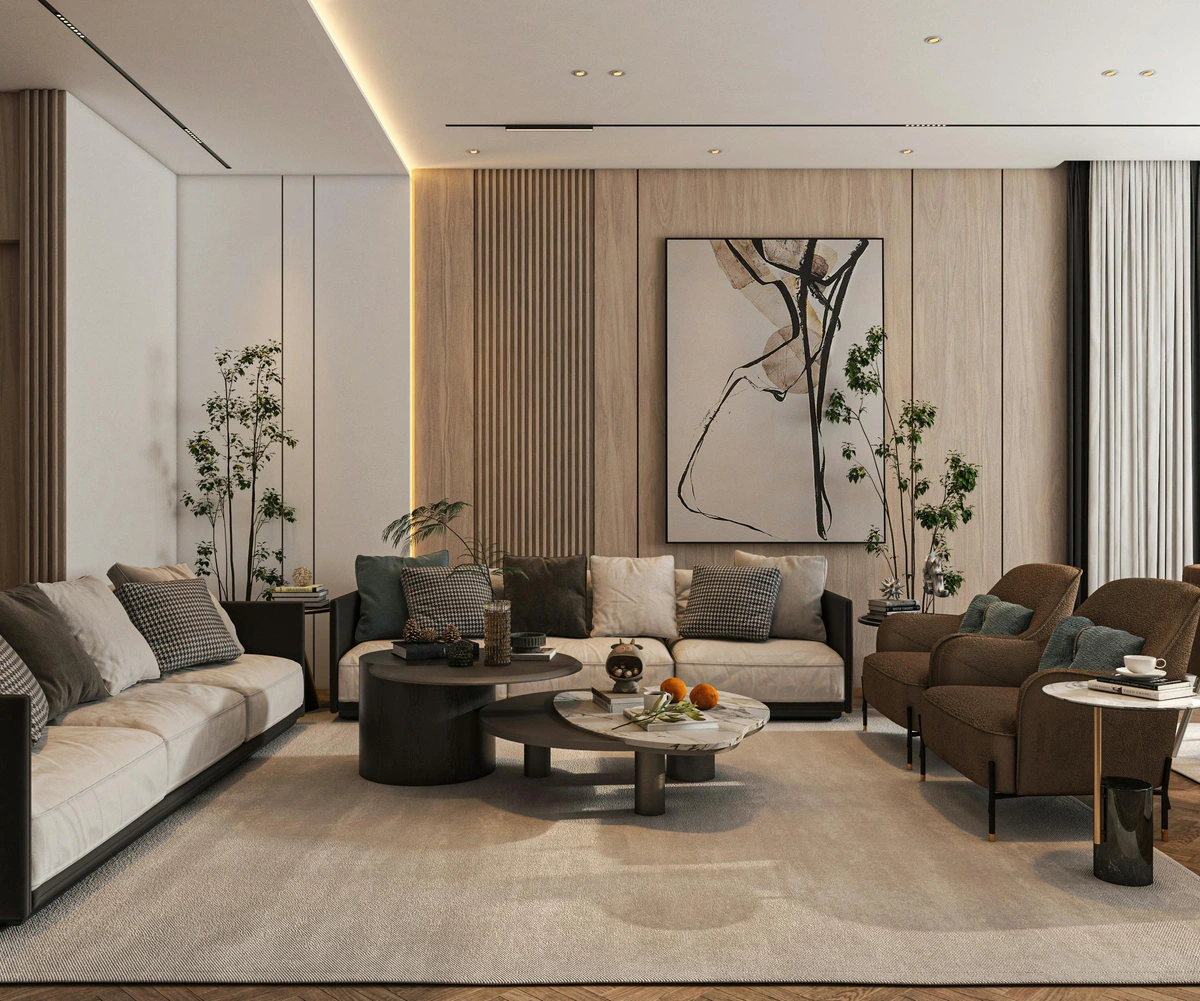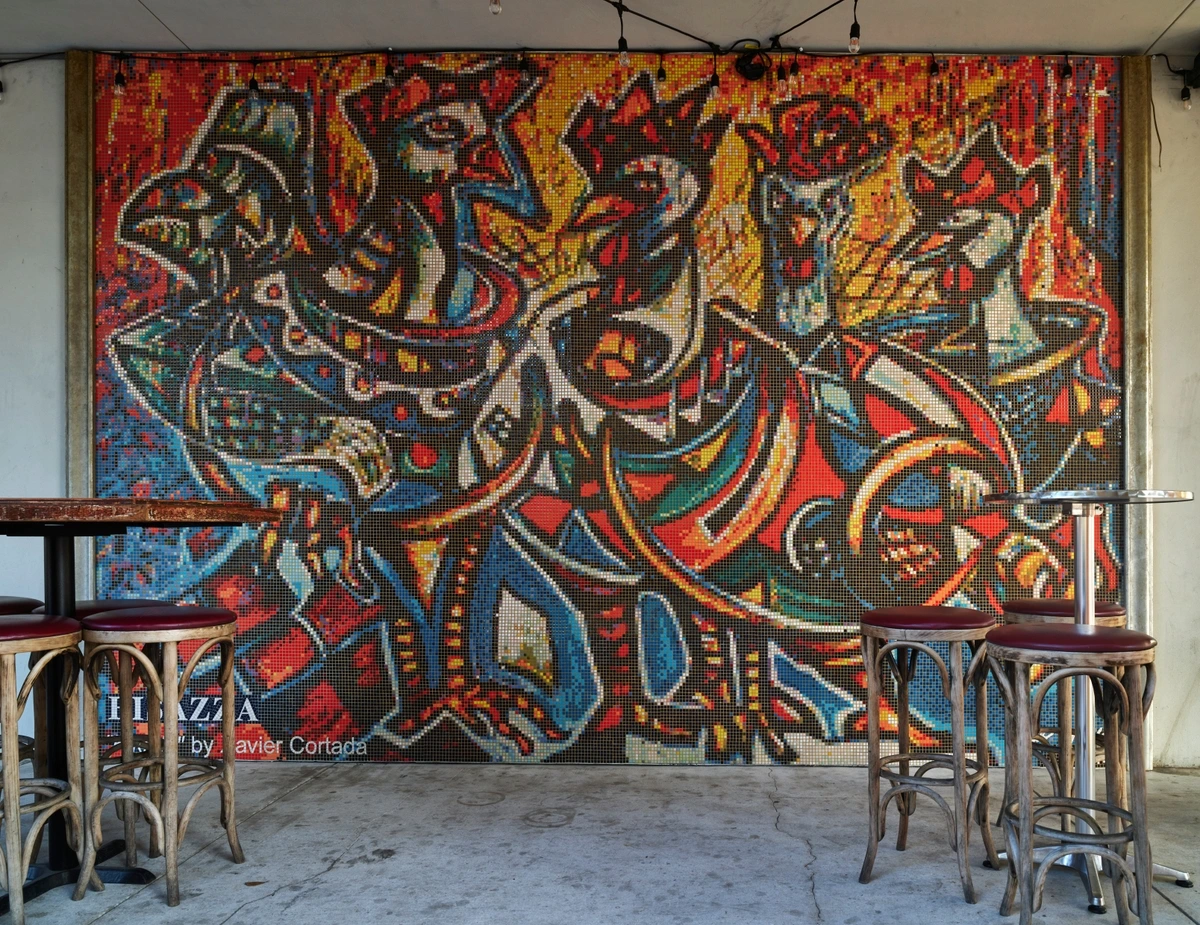Why Do People Buy Art? An Artist's Personal Take (Expanded)
Okay, let's be honest. As an artist, I spend a lot of time making things. Hours, days, sometimes weeks pouring my energy, thoughts, and paint (or whatever medium) into a piece. And then... someone buys it. It's a transaction, sure, but it feels like so much more. It makes me wonder, truly, why do people decide to bring a piece of art into their lives? What's the real drive behind it? Is it just about filling a blank space, or is something deeper going on?
I remember one time, a woman bought a small abstract piece I'd done. It wasn't a big, flashy work, just a quiet study in blues and greens. She told me it reminded her of the feeling she got standing by the ocean on a misty morning, a feeling she desperately missed since moving inland. That sale stuck with me because it wasn't about the paint or the canvas; it was about a feeling, a memory, a connection. It's a question I've pondered quite a bit, both from the creator's side and just by observing the world. It's definitely not always about needing something to fill a blank space on the wall (though that's a perfectly valid reason!). There's something deeper, something more personal happening. So, let's dive into some of the reasons I've seen, felt, or just plain guessed are behind that decision to click 'buy' or walk out of a gallery with something new tucked under your arm.
The Emotional Connection: It Just Speaks to You
This, I think, is the most beautiful reason. You see a piece, and something just... clicks. It might be the colors, the subject matter, the feeling it evokes. It resonates with you on a level that's hard to articulate. It feels like it understands something about you, or it shows you something you needed to see. It's like the art reaches out and touches a part of your soul you didn't even know was waiting.
I've had people tell me my abstract pieces make them feel calm, or energized, or nostalgic. They project their own experiences and emotions onto the work, and it becomes a mirror, or a window. That connection is incredibly powerful. It's not about matching your sofa; it's about feeding your soul a little. Think about how certain colors or forms can instantly transport you or shift your mood – art taps into that deep psychological wellspring. Maybe it reminds you of a place you love, a feeling you cherish, or a memory you hold dear. This kind of purchase is purely driven by the heart. And honestly? As an artist, these are the sales that mean the absolute most. Knowing something I created can touch someone that deeply is the greatest reward. Different types of art, from abstract expressionism to figurative work, or even specific art styles or color palettes, can evoke vastly different emotional responses, making the search for that perfect piece a truly personal journey.

If you're just starting out, focusing on this emotional pull is a fantastic way to buy art for beginners. Don't overthink it; if you love it, that's reason enough. And sometimes, that emotional connection is so strong, you just have to have it, impulse or not.
Art as Decoration: Making a Space Yours
Alright, I said it's not always about filling a blank wall, but let's not dismiss the power of art in transforming a space! Our homes are extensions of ourselves, and the art we choose is a huge part of that. It adds personality, color, and a focal point. It's a way to make a house feel like a home, reflecting your unique taste and story. I once saw a small, vibrant abstract piece of mine hung in a minimalist hallway – it completely changed the energy of the space, adding a pop of unexpected joy. It wasn't just decoration; it was the soul of that hallway.
Think about it. A room with bare walls feels... well, bare. Add a vibrant painting, a striking print, or an interesting sculpture, and suddenly the room has character. It tells a story about the person who lives there. It can make a minimalist space pop or tie together an eclectic collection. I've seen my own work hung in places I never imagined, from cozy reading nooks to bustling office lobbies, and it's always fascinating to see how the art interacts with the environment and the people in it. Sometimes I wonder if the art feels different, too, depending on its surroundings. Probably not, but it's a fun thought.

Choosing art for your home is a really fun process. It's about finding pieces that complement your style, whether you're decorating a living room, a bedroom, or even a bathroom (yes, you can put art in the bathroom!). It's about creating an environment that makes you feel good. And don't forget about decorating your home in general – art is a key ingredient! If you're short on wall space, consider smaller pieces for shelves or tables, or even sculptures. There are so many ways to display art at home beyond the traditional nail-in-the-wall.
And hey, if you're looking for something specific, maybe something colorful and abstract? You know where to buy it. 😉
The Investment Angle: Hoping for Future Value
Ah, the investment side. This is where things get a bit more... calculated. Some people buy art with the hope (or intention) that its value will increase over time. This is often the realm of serious collectors, but it's not exclusively for the ultra-wealthy (though you might wonder why rich people buy art). It's a world that sometimes feels a million miles away from the quiet act of creation in my studio.
Investing in art can be complex. It involves researching artists, understanding the market, and sometimes taking risks. You might look for emerging artists worth collecting or focus on established names. 'Blue-chip' artists, those with a proven track record and stable market, are often seen as safer bets, while emerging artists offer the potential for higher returns but also higher risk. It's a different kind of thrill than buying purely for love.
From my side, as the artist, it's a strange feeling. On one hand, it's validating to think your work might appreciate in value – it feels like a recognition of potential. On the other hand, if someone buys only for investment and doesn't connect with the piece emotionally, it feels a little... transactional. Like the art is just a commodity. But hey, a sale is a sale, and it helps me keep the lights on and buy more paint, which is pretty important! Factors like exhibition history, provenance (where the art has been), and documentation can all play a role in potential future value, which is a whole other layer of complexity I sometimes find amusingly detached from the actual making of the art.

Is art a good investment? That's a whole other conversation (art as an investment: risks vs rewards). It can be, but it's not like buying stocks. The market is less liquid, and value can be subjective. But for some, the potential financial gain is a significant motivator.
Status and Collection Building: Curating a World
For some, buying art is about building a collection, curating a personal museum of taste and knowledge. It's about the thrill of the hunt, the research, the acquisition. It can be a way to signal status, sophistication, or a deep engagement with culture. It's like building a visual autobiography, each piece a chapter. It's a passion that consumes you, sending you down rabbit holes of art history and artist biographies.
Collectors often develop a specific focus – maybe they collect abstract expressionism, or works by contemporary African diaspora artists, or pieces from a particular region like contemporary art in Japan. It becomes a passion, a way of life. This journey of building a collection is deeply personal; it reflects the collector's evolving eye, their learning about art styles and history, and their connection to the art world. While status can be a factor, the core drive is often a genuine love for the process of discovery and curation. It's about the story behind each piece and how it fits into their larger narrative.
Seeing my work become part of someone's carefully curated collection is incredibly flattering. It means they see it fitting into their larger narrative, their aesthetic world. It's a different kind of validation than the emotional connection, more about being recognized within a specific cultural context.

Visiting art galleries and museums worldwide is a key part of this journey. It's about learning, seeing, and refining one's eye. It's about becoming part of a community of like-minded individuals who share a passion for art.
Supporting the Artist: A Direct Connection
This is another reason that warms my artist heart. Some people buy art specifically because they want to support the creator. They believe in the artist's vision, their journey, or simply want to help them continue making work. To those of you who buy art with this intention – thank you. Seriously. It makes a world of difference. It's not just buying a product; it's an investment in a person's ability to keep creating, to keep sharing their perspective with the world. That sale isn't just income; it's validation, encouragement, and the fuel that allows me to buy more supplies and spend more time in the studio.
Buying directly from an artist, or from a local art gallery that represents them, creates a direct connection. You're not just buying an object; you're investing in a person's livelihood and creative future. It's a beautiful act of patronage, even on a small scale. That sale of the blue and green abstract piece? It didn't just give the buyer a memory; it helped me afford the new brushes I desperately needed at the time. It's a tangible cycle of creation and support.

It's a way to say, "I see you, I value what you do, and I want to be a part of it." This is particularly true when buying art from local artists or emerging artists. It's a tangible way to contribute to the vibrant ecosystem of the art world. Sometimes, supporting an artist might also mean supporting a cause they champion through their work, adding another layer of meaning to the purchase.
The Intellectual Stimulus: Art That Makes You Think
Sometimes, people buy art because it challenges them, makes them think, or introduces them to new ideas. It's not always about beauty; sometimes it's about the concept, the message, or the historical context. It's art that sparks curiosity and conversation. It's the piece that makes you pause, scratch your head, and then dive into a book or an online search to understand it better.
Modern and contemporary art often falls into this category. It can be provocative, confusing, or deeply philosophical. Take, for example, the work of Ai Weiwei. His pieces often use everyday objects or traditional materials to comment on political and social issues, challenging viewers to look beyond the aesthetic and engage with complex ideas about freedom, human rights, and history. Or consider movements like Conceptual Art, where the idea behind the work is paramount, or Surrealism, which delves into the subconscious mind. Buying such a piece is like bringing a conversation starter into your home. It's a piece that you can engage with over time, discovering new layers of meaning.

Understanding what is modern art or what is the meaning of art can be a lifelong journey. Buying art that stimulates your intellect is a way to keep that journey going, right there on your wall. Art that connects with your cultural identity or heritage can also fall into this category, prompting reflection and connection to history and tradition.
Therapeutic Benefits: Art for Well-being
This is a reason that's perhaps less often articulated but deeply felt. Living with art can have a profound impact on our mental and emotional well-being. Certain pieces can create a sense of calm, inspire creativity, or simply provide a moment of visual pleasure in a busy day. It's like a little visual therapy session every time you look at it.
I've heard from clients who say a particular painting in their home helps them relax after a stressful day, or that the colors in a piece energize their workspace. Art can transform the feeling of a room, making it a sanctuary, a place of inspiration, or a space that simply makes you feel good. It's the quiet power of aesthetics and emotion working together. Choosing art for a specific purpose, like creating a meditation space, highlights this therapeutic potential.

In a world that can feel overwhelming, art offers a moment of pause, beauty, or reflection. It's a simple, yet powerful, way to enhance your daily life and support your well-being. It's a reminder that beauty and meaning can be found and brought into your personal space.
Cultural Commentary or Identity: Art That Speaks Volumes
Art is a powerful vehicle for expressing and exploring cultural identity, heritage, and societal issues. For some buyers, acquiring art is a way to connect with their roots, support artists from their community, or make a statement about the world around them. It's art that carries history, identity, and often, a message.
Buying art that reflects your cultural identity can be a deeply affirming act. It's a way to celebrate heritage, preserve traditions, or engage with contemporary cultural dialogues. It can also be about supporting artists who are giving voice to important social or political issues, like protest art. These pieces aren't just objects; they are artifacts of culture, history, and identity.

Collecting art that engages with cultural commentary or identity is a way to build a collection that is not only aesthetically pleasing but also meaningful and resonant on a personal and societal level. It's about surrounding yourself with pieces that tell important stories and reflect the diverse tapestry of human experience.
Art as a Gift: Sharing the Connection
While most art buying is for oneself, a significant reason people acquire art is to give it as a gift. This combines several of the motivations above, but with the added layer of considering the recipient. You might choose a piece because you know it will evoke a specific emotion in them, because it fits their personal style or home decor, or because it represents a shared memory or interest.
Giving art as a gift is a deeply personal gesture. It shows you've put thought into something unique and meaningful, something that hopefully resonates with their soul or enhances their space in a special way. It's not always easy to pick something for someone else – it requires knowing them well and trusting your own eye – but when you get it right, it can be incredibly rewarding for both the giver and the receiver. I've had pieces bought as wedding gifts (art as wedding gift) or birthday presents, and it's lovely to think of my work becoming part of someone else's special moments.

Choosing the perfect art gift involves considering their taste, their space, and the message you want to convey. It's a beautiful way to share the joy and meaning that art brings.
It's a Kaleidoscope of Reasons, Isn't It?
In my experience, it's rarely just one reason. It's usually a blend, like mixing colors on a palette to create something new and complex. The motivations swirl together, creating a unique pattern for each buyer. It's fascinating to see which threads are strongest for different people. Here's a quick look at the mix, and how they often overlap:
- Emotional Connection: It just feels right. This is often the primary driver, even if other reasons are present.
- Decoration: It makes a space yours. A practical need that can be met with deep personal style.
- Investment: Hoping for future value. Can be a primary goal or a hopeful bonus alongside other reasons.
- Collection Building: Curating a personal world. A passion that often combines intellectual interest, status, and a love for the art itself.
- Supporting the Artist: A direct connection to the creator. A conscious choice to contribute to the artist's journey.
- Intellectual Stimulus: Art that makes you think. Can be a standalone reason or part of collection building.
- Therapeutic Benefits: Art for well-being. Often a quiet, personal motivation tied to emotional connection and creating a comfortable space.
- Cultural Commentary/Identity: Art that speaks volumes. A powerful reason that connects the personal to the collective.
- Gifting: Sharing the connection with someone else. A generous act that draws on many of the other motivations.
- Impulse/Love at First Sight: Sometimes, you just have to have it because you can't stop thinking about it. This is often pure emotional connection taking over!
The beauty of buying art is that it's a deeply personal act. There's no single right or wrong reason. It's about what the art brings to your life, your space, and your world. It's a unique interaction between the viewer, the artwork, and the artist.
If you're curious about starting your own collection, check out my guide on starting an art collection on a budget. It's less scary than you might think!
FAQs: Your Burning Questions Answered (Probably)
Okay, let's tackle some common questions that pop up when people think about buying art. No silly questions here, just genuine curiosity!
Is it okay to buy art just because it matches my decor?
Absolutely! While the emotional connection is wonderful, buying art because it enhances your living space is a perfectly valid reason. It's your home, after all! Art is meant to be lived with and enjoyed. It's a great way to personalize your space, whether you're decorating a new apartment or just refreshing a room.
Do I need to be rich to buy art?
Nope! There's art available at almost every price point. You can find affordable art prints, buy directly from artists, or explore options like art rental services. My guide on buy art for less has some tips. Don't let the idea of high prices scare you away – there's a vast world of affordable art out there!
How do I know if a piece of art is 'good'?
"Good" is subjective! If you love it, if it makes you feel something, or if it enhances your space, then it's good for you. Learning about art styles and how to read a painting can deepen your appreciation, but trust your gut. Your personal connection is what matters most. Don't worry about what critics say; focus on what speaks to you.
Should I buy art as an investment?
Only if you're prepared for the risks and complexities of the art market. It's best to buy art you love first, and consider potential investment value second. Think of it as a bonus, not the primary goal. The market can be unpredictable, so passion should ideally be the main driver.
How do I choose the right size art for my space?
Consider the wall size and the furniture around it. A common rule is that art should be about two-thirds the width of the furniture it hangs above (like a sofa or console table). For a large, empty wall, a single large piece can make a statement, while a gallery wall with multiple pieces can fill the space and add visual interest. Don't be afraid to experiment! And remember, art isn't just for walls; sculptures or smaller pieces can work on tables or shelves too.
What about framing?
Framing is important for both aesthetics and preservation! It can completely change the look of a piece and protect it from damage. The style of the frame should complement the artwork and your decor. Custom framing can be expensive, but there are also many ready-made options available. Check out guides on the ultimate guide to framing your artwork or how to frame oversized artwork for more tips.
Can I commission a piece?
Yes! Commissioning art is a fantastic way to get a piece that is perfectly tailored to your vision, space, or specific subject matter (like a pet portrait). It creates a unique collaboration with the artist. My guide on commissioning a custom painting walks you through the process.
How do I care for my new artwork?
Proper care is essential to preserve your art! Avoid direct sunlight, extreme temperature changes, and high humidity. Dust gently with a soft brush or cloth. For specific types of art, like paintings or prints, there are detailed guides. For example, you can learn about how to take care of your painting or cleaning acrylic paintings. Knowing how to care for your piece ensures you can enjoy it for years to come.
What's the difference between an original and a print?
An original is the unique, one-of-a-kind artwork created by the artist's hand (like a painting or sculpture). A print is a reproduction of an original artwork, often produced in multiple copies. Prints can range from open editions (unlimited copies) to limited edition prints (a fixed number of copies, often signed and numbered by the artist). Originals are typically more expensive due to their uniqueness, while prints offer a more affordable way to own art you love. Both are valid ways to collect!
How can I find artists to buy from?
Beyond browsing my own site 😉, there are tons of ways! Explore local art galleries (they often represent emerging and established artists), visit art fairs, check out online marketplaces (buying art online), follow artists on social media, or even visit open studio events. Don't be afraid to reach out directly to an artist whose work you admire!
What if I don't have much wall space or want to display art creatively?
No wall space? No problem! Art isn't just for hanging. Consider smaller pieces for bookshelves, side tables, or desks. Sculptures, ceramics, or even framed prints leaning against a wall can add artistic flair. You can also use easels, display cabinets, or even incorporate art into functional items like textiles or furniture. Get creative and think outside the frame!
Final Thoughts
Buying art is a journey. It's about discovery, personal taste, and bringing something meaningful into your life. Whether you're drawn to a piece for its beauty, its message, its potential value, its therapeutic effect, its cultural resonance, or simply because you want to support the person who made it, every reason is valid. It's a way to enrich your environment and your inner world. It's a conversation, a connection, a piece of someone else's soul finding a home with you.
So, next time you see a piece that catches your eye, pause and ask yourself: Why does this speak to me? The answer might surprise you. And who knows, it might be the start of your own beautiful collection.
If you're ready to explore, feel free to browse the art for sale on my site. Maybe something there will speak to you. You can also learn more about my own artist's journey or visit my museum in Den Bosch if you're ever in the Netherlands.